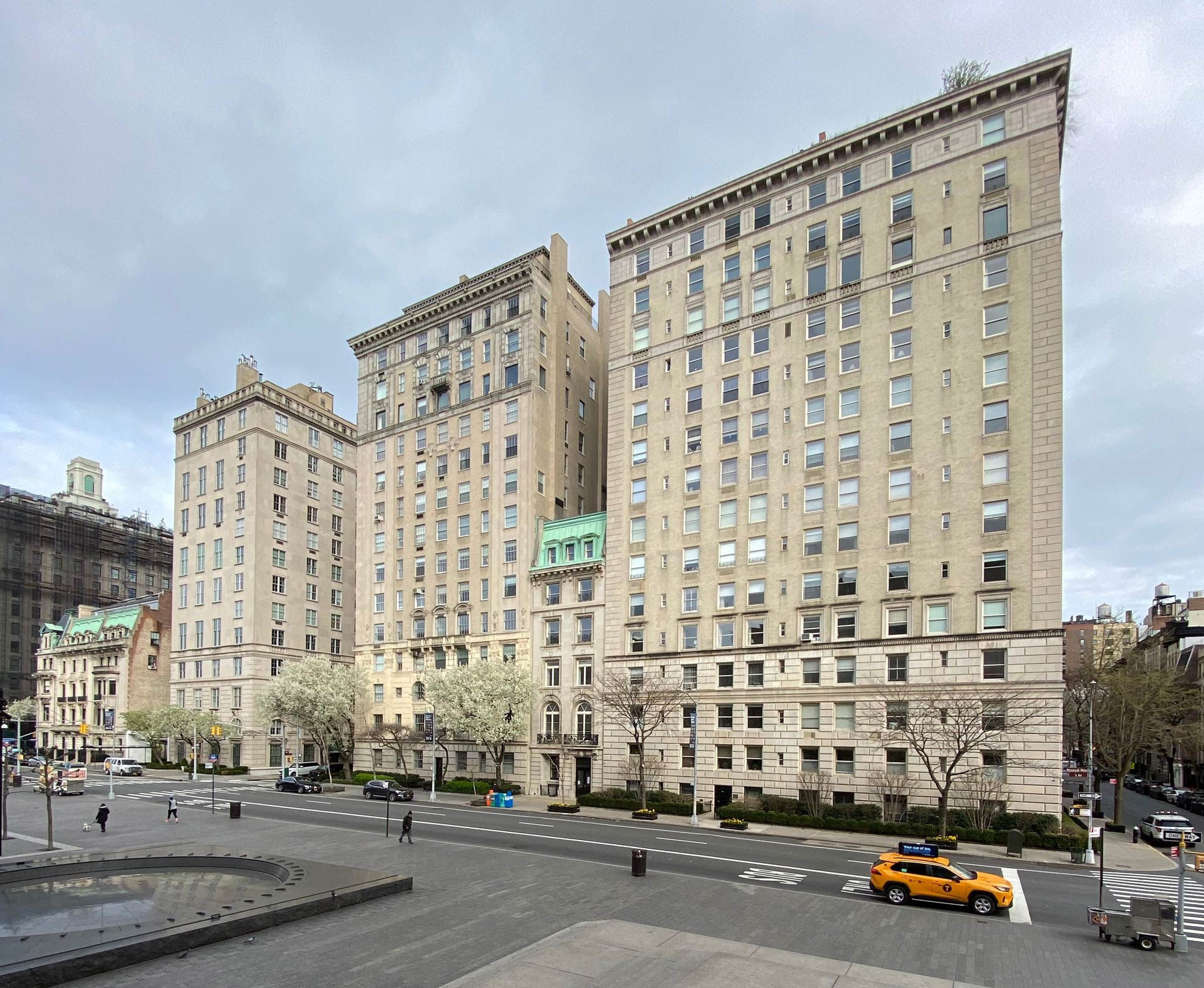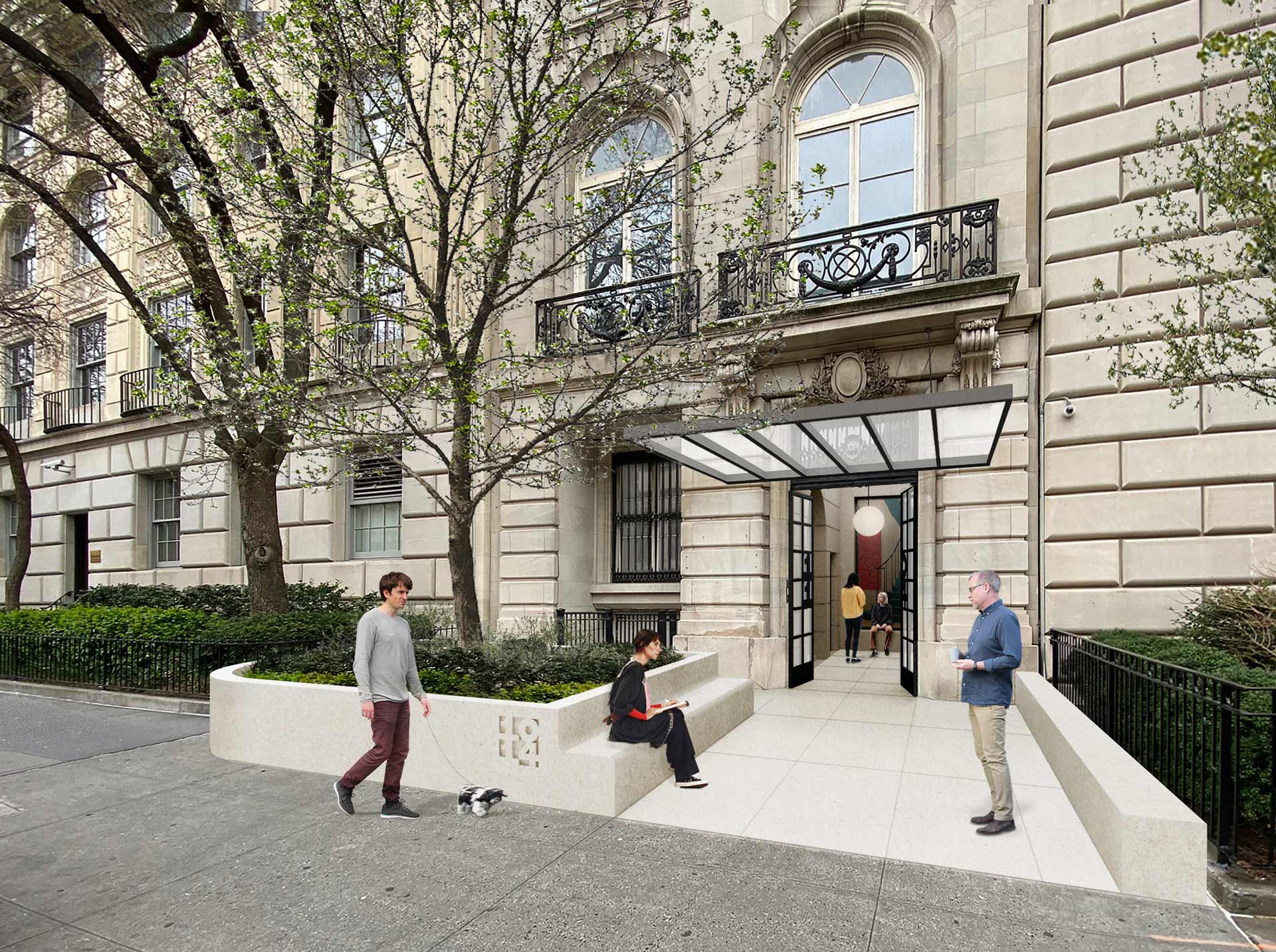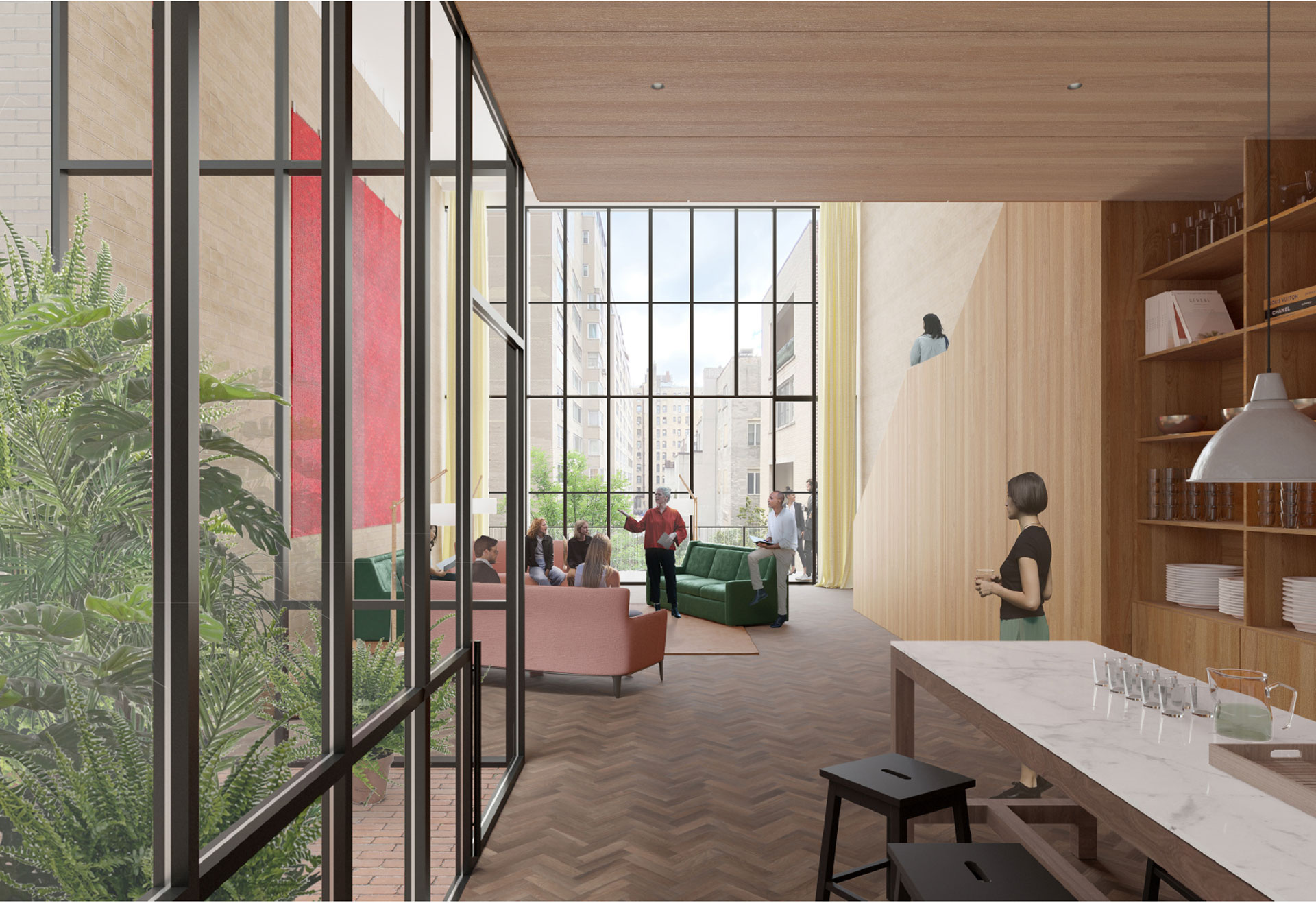1014 Fifth Avenue, New York, NY, USA

David Chipperfield Architects was commissioned by the Federal Government to transform a Fifth Avenue townhouse dating from 1906. The six-story former headquarters of the Goethe Institute in Manhattan is being renovated into 1014, a center for transatlantic encounters. The design for the narrow but very deep building includes a new meeting space with a winter garden and balcony overlooking the rear courtyard, together with living and working spaces for 1014 staff and resident fellows on the upper floors.
1014 Fifth Avenue demonstrates an exemplary building renovation process that integrates design and performance through creative means. The project is a well-insulated, all-electric, zero carbon building. Additionally, the German Federal Government has agreed to pursue an IFLI Zero Carbon certification while balancing the challenges of intervening on a listed, historic building.
The program is extremely diverse with multiuse open office space, private offices, small apartment suites with shares kitchen and living areas, commercial kitchens, and event spaces that accommodate over 150 people at a time. Additionally, the residential occupants will be there for short-term stays of weeks to months, adding to the challenge of ensuring high performance operation. To address such diversity, Transsolar developed a flexible climate concept that uses a dedicated outside air (DOAS) system to deliver minimum ventilation air with sensible and latent heat recovery. Due to extreme space constraints, the space conditioning concept uses a variable refrigerant flow (VRF) system with fan coil terminal units for individual zone heating and cooling. Ceiling fans enhance comfort; fan-assisted natural ventilation takes advantage of existing flues in the historic structure to ventilate the auditorium, common rooms, and multiuse spaces
The double-height wintergarden is an important design element in the project. Transsolar guided the team in developing a passive winter garden with no active system. Small amounts of transfer air through interior windows maintain the garden temperature during extreme outdoor temperatures. During the winter, this air circulation helps to deliver needed humidity to the adjacent spaces.
A key challenge was to mitigate thermal bridging in the existing structure because of exposed slabs and uninsulated balconies. Transsolar and the project team reduced the linear heat loss from 0.35 W/m-K to 0.25 W/m-K resulting in a wall assembly R-value of R-21.5. Another important aspect of the envelope design is the historically protected front-façade glazing. While the window performance was not difficult to achieve, integrating operability and insect screens for natural ventilation was an important aspect of the design that impacted the building’s operation and aesthetic. In sum, theses climate and energy strategies contribute to a projected annual all-electric EUI of 26 kBtu/ft²- yr (82 kWh/m²) with all resulting grid-emissions carbon to be offset by the owner.

